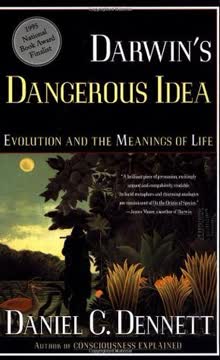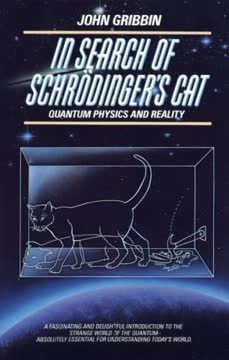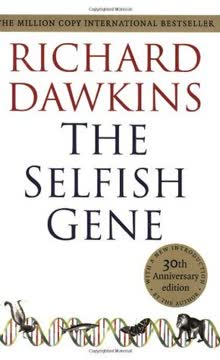Key Takeaways
1. Humans are genetically close to chimpanzees but culturally distinct
We are just a third species of chimpanzee, and what is good enough for common and pygmy chimps is good enough for us.
Genetic similarity, cultural divide. Humans share over 98% of our genes with chimpanzees, diverging only about 7 million years ago. This close genetic relationship belies the vast cultural differences between humans and our ape cousins. While chimpanzees exhibit some proto-cultural behaviors, humans have developed complex language, art, technology, and social structures that far surpass anything seen in the animal kingdom.
Uniquely human traits. Despite our genetic closeness, humans have evolved several distinctive biological and behavioral traits:
- Bipedal locomotion
- Larger brains relative to body size
- Complex language capabilities
- Abstract thinking and creativity
- Cumulative cultural evolution
- Advanced tool use and technology
These traits emerged gradually over millions of years of human evolution, with modern human behavior appearing relatively recently, around 50,000-100,000 years ago. The "great leap forward" in human cultural evolution likely coincided with the development of fully modern language capabilities, allowing for more sophisticated communication and cultural transmission.
2. Human sexuality evolved unique features for pair bonding and reproduction
Not surprisingly, it turns out that we are pre-programmed not just to a universal grammar with adjustable switches, but to a particular set of switch settings: the settings that surface again and again in Creole grammars.
Evolutionary adaptations. Human sexuality diverged from our ape ancestors in several key ways that facilitated pair bonding and cooperative child-rearing. Unlike most mammals, humans have:
- Concealed ovulation
- Continuous female sexual receptivity
- Face-to-face copulation
- Relatively large penises
- Female breasts enlarged before pregnancy
Strategic pair bonding. These traits likely evolved to strengthen pair bonds between males and females, encouraging long-term partnerships beneficial for raising highly dependent human offspring. Concealed ovulation and continuous receptivity may have evolved to keep males engaged and invested in the relationship, while face-to-face copulation facilitates emotional bonding.
The human mating system balances competing evolutionary strategies. While humans form lasting pair bonds, we also exhibit behaviors associated with both monogamy and polygamy. This flexible mating strategy allows individuals to pursue different reproductive tactics based on environmental and social conditions, maximizing genetic fitness across varied circumstances.
3. Language and art emerged as pivotal human innovations
The most brilliant moment of our rise already contained the seeds of what may yet prove a cause of our fall.
Transformative technologies. Language and art represent two of humanity's most profound and transformative innovations. These capabilities allowed humans to communicate complex ideas, coordinate large-scale activities, and express abstract concepts. The emergence of fully modern language likely triggered the "great leap forward" in human cultural evolution around 50,000 years ago.
Language evolution. Human language likely evolved from simpler communication systems:
- Animal vocalizations and gestures
- Proto-language with limited vocabulary and grammar
- Pidgin languages with simplified structures
- Creole languages with more complex grammar
- Fully modern languages with recursive syntax
Art emerged as another uniquely human form of symbolic communication. Early art forms included:
- Cave paintings and rock art
- Carved figurines and jewelry
- Musical instruments
- Body decoration and clothing
These artistic expressions served multiple functions, including aesthetic pleasure, symbolic communication, and potentially as fitness indicators in mate selection. The capacity for art and language set humans apart from other animals and catalyzed the rapid cultural evolution that led to modern human societies.
4. Agriculture brought mixed blessings to human societies
The New World grains were already productive in the wild, and one can still harvest up to 700 pounds of grain per acre from wild wheat growing naturally on hillsides in the Near East.
Revolutionary shift. The development of agriculture around 10,000 years ago marked a pivotal transition in human history. This shift from hunting and gathering to farming and animal husbandry allowed for larger, more stable food supplies and sedentary lifestyles. However, the agricultural revolution had both positive and negative consequences for human societies.
Pros and cons of agriculture:
Pros:
- Increased food production and population growth
- Development of permanent settlements and cities
- Specialization of labor and technological innovation
- Accumulation of surplus resources
Cons:
- Decreased dietary diversity and nutritional quality
- Increased susceptibility to famines and crop failures
- Higher population densities leading to disease spread
- Social stratification and inequality
The transition to agriculture was not uniformly beneficial, as early agricultural societies often experienced worse health outcomes and increased social inequality compared to hunter-gatherer groups. However, agriculture ultimately enabled the development of complex civilizations and technologies that shaped the modern world.
5. Geographic factors shaped the spread of cultures and technologies
Geography sets ground rules for the evolution, both biological and cultural, of all species, including our own.
Environmental determinism. The geographic distribution of plants, animals, and resources played a crucial role in shaping human history and cultural development. Certain regions had natural advantages that facilitated the early development of agriculture, animal domestication, and technological innovation.
Key geographic factors influencing human development:
- Availability of domesticable plants and animals
- Climate and growing conditions
- Natural barriers and transportation routes
- Access to mineral resources
The Fertile Crescent, for example, had a favorable combination of domesticable crops and animals, allowing for the early development of agriculture. Similarly, the east-west orientation of Eurasia facilitated the spread of crops, animals, and technologies across similar latitudes, while the north-south orientation of the Americas hindered such exchanges.
These geographic advantages compounded over time, leading to significant disparities in technological development and societal complexity between different world regions. Understanding these geographic factors helps explain patterns of human migration, conquest, and cultural diffusion throughout history.
6. Colonization and conquest reshaped global populations
Europeans' conquest of America and Australia was due not to their better genes but to their worse germs (especially smallpox), more advanced technology (including weapons and ships), information storage through writing, and political organization—all stemming ultimately from continental differences in geography.
Guns, germs, and steel. The European colonization of the Americas, Australia, and other regions dramatically reshaped global populations and cultures. This process was driven not by genetic superiority, but by a combination of technological, biological, and social factors that gave Europeans significant advantages over indigenous populations.
Key factors in European colonial success:
- Advanced weapons and military technology
- Resistance to infectious diseases
- Centralized political organization
- Writing systems for information storage and transmission
- Domesticated animals for transportation and warfare
The colonization process often led to devastating consequences for indigenous populations, including:
- Population collapse due to introduced diseases
- Displacement from ancestral lands
- Cultural suppression and assimilation
- Economic exploitation and resource extraction
Understanding the complex interplay of factors that enabled European colonial expansion helps explain global patterns of inequality and cultural dominance that persist to this day.
7. The Indo-European language family expanded through technological advantages
Somehow, within a few tens of thousands of years—a time that is almost infinitely long when measured against one person's memory but is only a tiny fraction of our species' separate history—we had begun to demonstrate the qualities that make us unique and fragile.
Linguistic dominance. The Indo-European language family, which includes most European languages as well as many in South Asia, expanded rapidly across Eurasia starting around 4000-3000 BCE. This expansion was likely driven by a combination of technological and cultural innovations that gave Indo-European speakers significant advantages over their neighbors.
Key factors in Indo-European expansion:
- Domestication of horses for transportation and warfare
- Development of wheeled vehicles
- Advances in metallurgy and weapons technology
- Pastoral nomadism adapted to steppe environments
The spread of Indo-European languages reshaped the linguistic and cultural landscape of Eurasia, displacing or assimilating many pre-existing language groups. This process of language replacement and cultural diffusion has continued into modern times with the global spread of European languages through colonization and globalization.
Understanding the factors behind the Indo-European expansion provides insights into broader patterns of language spread and cultural change throughout human history.
8. Human cultural diversity is declining in the modern world
Loss of cultural diversity may be the price that we have to pay for survival.
Homogenization trends. The modern world is experiencing a rapid decline in cultural and linguistic diversity as globalization, urbanization, and technological change reshape human societies. This process of cultural homogenization has both positive and negative consequences for humanity.
Factors driving cultural homogenization:
- Global communication technologies
- Economic integration and trade
- Mass media and popular culture
- Standardized education systems
- Migration and urbanization
While cultural homogenization can facilitate global cooperation and reduce conflicts based on cultural differences, it also leads to the loss of unique knowledge systems, languages, and ways of life. This erosion of cultural diversity represents a significant loss of human heritage and potential adaptive strategies for facing future challenges.
Efforts to preserve cultural diversity must balance the benefits of global integration with the value of maintaining diverse cultural traditions and knowledge systems. Finding ways to promote cultural exchange while supporting the survival of minority cultures remains a crucial challenge for the modern world.
9. Chemical abuse emerged as a uniquely human behavior
Drug abuse is a classic instance of a once-useful instinct—the reliance on handicap signals—that has turned foul in us.
Evolutionary mismatch. Human propensity for drug abuse represents a uniquely human behavior with no direct parallels in other animals. This tendency likely emerged as a maladaptive extension of adaptive traits related to seeking pleasure, altering consciousness, or signaling fitness.
Potential evolutionary origins of drug abuse:
- Seeking novel sensory experiences
- Self-medication for pain or mental distress
- Status signaling through risky behavior
- Hijacking of reward systems evolved for other purposes
Modern drug abuse often represents an evolutionary mismatch, where behaviors that may have been adaptive in ancestral environments become harmful in contemporary societies. The widespread availability of potent, refined drugs in modern contexts exacerbates these tendencies, leading to addiction and associated social problems.
Understanding the evolutionary roots of drug abuse can inform more effective prevention and treatment strategies, focusing on addressing the underlying psychological and social factors that drive substance use rather than solely targeting the drugs themselves.
10. The search for extraterrestrial intelligence reflects human exceptionalism
For practical purposes, we are unique and alone in a crowded universe. Thank God!
Cosmic perspective. The search for extraterrestrial intelligence (SETI) reflects both humanity's curiosity about the cosmos and our sense of exceptionalism as a technologically advanced species. While the vast number of stars and planets in the universe suggests the possibility of other intelligent life, the apparent lack of evidence for such life raises profound questions about our place in the cosmos.
Factors influencing the search for extraterrestrial life:
- The Drake equation estimating the number of communicative civilizations
- The Fermi paradox questioning the lack of evidence for alien life
- Technological limitations in detecting distant civilizations
- The possibility of rare Earth hypotheses suggesting life is exceptionally rare
The absence of clear evidence for extraterrestrial intelligence may indicate that the development of advanced technological civilizations is extremely rare or short-lived. This possibility underscores the uniqueness and potential fragility of human civilization, emphasizing the importance of preserving our species and planet.
The search for extraterrestrial life continues to drive scientific exploration and philosophical reflection on humanity's place in the universe, regardless of whether we ultimately discover that we are alone or part of a broader cosmic community.
Last updated:
FAQ
What's The Rise and Fall of the Third Chimpanzee about?
- Human Uniqueness and Similarity: The book explores the paradox of humans being both unique and similar to other animals, especially chimpanzees, sharing over 98% of our genes with them.
- Evolutionary Journey: Jared Diamond traces human evolution from ape-like ancestors to modern humans, highlighting key developments like language, art, and technology.
- Consequences of Traits: It addresses the darker aspects of human nature, such as violence and environmental destruction, and emphasizes learning from history to avoid repeating mistakes.
Why should I read The Rise and Fall of the Third Chimpanzee?
- Comprehensive Perspective: The book offers a blend of anthropology, biology, and history, providing a deep understanding of human evolution and behavior.
- Relevance to Modern Issues: Diamond connects historical human behaviors to contemporary challenges, inspiring action towards sustainability.
- Engaging Writing Style: Jared Diamond's accessible and thought-provoking narrative makes complex scientific concepts understandable and engaging.
What are the key takeaways of The Rise and Fall of the Third Chimpanzee?
- Human Ancestry: Humans are part of the animal kingdom, sharing significant genetic heritage with chimpanzees, challenging the notion of human exceptionalism.
- Cultural Evolution: Rapid cultural advancements, like language and art, have significantly shaped human societies and interactions.
- Environmental Responsibility: There's an urgent need for humans to recognize their environmental impact and adopt sustainable practices for survival.
What are the best quotes from The Rise and Fall of the Third Chimpanzee and what do they mean?
- "We are just a third species of chimpanzee.": Highlights our close genetic ties to chimpanzees, challenging views on human uniqueness.
- "Our unique qualities have been responsible for our present biological success as a species.": Reflects on how distinct traits have allowed us to thrive but warns of potential consequences like violence and environmental destruction.
- "What we are doing now is shaping their world.": Emphasizes the responsibility current generations have towards future ones, urging consideration of long-term effects of choices.
How does The Rise and Fall of the Third Chimpanzee explain human violence?
- Innate Aggression: Diamond suggests that while aggression may be innate, it is exacerbated by social and environmental factors, complicating our understanding of human behavior.
- Technological Impact: Technological advancements have amplified our capacity for violence, raising concerns about the implications of our technological power.
- Historical Context: Provides historical examples of societal violence, illustrating patterns that can help avoid similar fates in the future.
What role does culture play in human evolution according to The Rise and Fall of the Third Chimpanzee?
- Cultural Development: Cultural traits like language and art are crucial to human evolution, allowing for complex social structures and interactions.
- Transmission of Knowledge: Passing down knowledge through generations has been vital for human survival and adaptation, differentiating us from other species.
- Influence on Behavior: Culture shapes individual behaviors and societal norms, impacting everything from mating practices to environmental stewardship.
How does The Rise and Fall of the Third Chimpanzee address environmental issues?
- Human Impact: Highlights significant human impacts on the environment, including species extinction and habitat destruction, due to technological advancements.
- Sustainable Practices: Advocates for adopting sustainable practices to mitigate environmental damage, emphasizing our interconnectedness with nature.
- Lessons from History: Examines past societies that failed to manage resources, illustrating the importance of learning from history to inform current policies.
How does The Rise and Fall of the Third Chimpanzee explain the rise of agriculture?
- Cultural Shift: The transition from hunting and gathering to agriculture was a response to population pressures and environmental changes.
- Mixed Blessings: Agriculture enabled civilization growth but also led to social inequalities, health issues, and environmental degradation.
- Geographic Factors: The availability of domesticable plants and animals was crucial to the development of farming practices, influencing societal success.
What does The Rise and Fall of the Third Chimpanzee suggest about the future of humanity?
- Urgent Need for Change: Warns that without significant behavioral changes, humanity faces dire consequences, including potential extinction.
- Learning from History: Advocates for learning from past societies that failed to adapt, to make informed decisions for a sustainable future.
- Hope for Humanity: Despite challenges, Diamond expresses hope that humanity can change its trajectory through political will and sustainable practices.
How does The Rise and Fall of the Third Chimpanzee address the concept of genocide?
- Human Hallmark: Genocide is discussed as a uniquely human behavior, linked to cultural evolution and social structures.
- Historical Context: Examines historical instances of genocide, illustrating how cultural differences and resource competition have led to conflicts.
- Moral Implications: Emphasizes the need for awareness and understanding of violent tendencies to prevent future atrocities.
What role does language play in The Rise and Fall of the Third Chimpanzee?
- Language as a Unique Trait: Language distinguishes humans from other species, enabling complex communication and cultural development.
- Evolution of Language: Suggests language evolved as a social tool to enhance cooperation among early humans, shaping interactions and societal structures.
- Language and Identity: Highlights the connection between language and cultural identity, noting its role in uniting and dividing people.
How does The Rise and Fall of the Third Chimpanzee relate to modern environmental issues?
- Connection to Current Crises: Draws parallels between historical extinction patterns and contemporary environmental challenges.
- Sustainability and Responsibility: Stresses the importance of sustainable practices to protect the environment and ensure future survival.
- Role of Education: Advocates for increased awareness and education about environmental issues, believing informed citizens can drive change.
Review Summary
The Third Chimpanzee explores human evolution, behavior, and society through a scientific lens. Diamond argues humans are closely related to chimpanzees, examining our unique traits like language, art, and technology. He discusses sexuality, genetics, and cultural development, drawing comparisons with other species. The book covers topics such as genocide, environmental destruction, and potential human extinction. While some reviewers praise Diamond's insights and writing style, others critique his outdated information and overreaching conclusions. Overall, it's considered a thought-provoking work on human nature and our place in the world.
Similar Books










Download PDF
Download EPUB
.epub digital book format is ideal for reading ebooks on phones, tablets, and e-readers.









